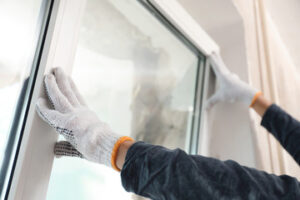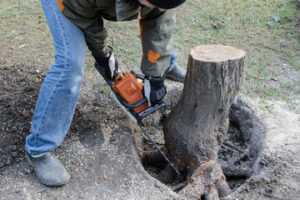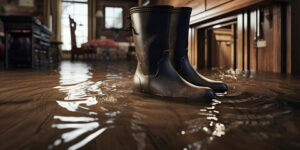Helena Roofers are responsible for installing, repairing, and maintaining building roofs. They must be detail-oriented and understand how different roofing materials affect a building’s overall structure.
They also need to be familiar with construction and safety regulations. These professionals typically have hands-on jobs that require them to be on the move all day and in extreme weather conditions.

Residential roofers work on single-family homes and multi-family housing complexes. They are experienced in working on residential rooftops and can perform various roofing services, including repair, installation, and inspection. They know how to navigate through residential neighborhoods and access roofs using ladders or scaffolding. They can help homeowners with their insurance claims and guide in selecting the best roofing materials for their home. Residential roofers with a retail sales model often have one point person who schedules appointments, answers questions, and interfaces with the crew for the client. They may also offer financing options. This type of company is a good choice for homeowners who want a convenient experience and quick turnaround.
Commercial
Commercial roofers deal with projects that involve larger buildings such as shopping centers, factories and office buildings. Unlike residential roofing, which often involves traditional asphalt shingles and wood shakes, commercial projects require specialty materials designed to withstand heavier loads and maintain specific internal conditions. For example, a warehouse may require rubber membrane roofs while an office building might use built-up gravel surfaces with bitumen cap sheets.
A successful commercial roofer is highly service-oriented and must be able to manage multiple clients with different schedules and needs. Skujins advises that newer commercial roofers begin by bidding on smaller jobs and focus on long-term relationships. He says it is easier financially to recover from mistakes on a smaller job than a multimillion-dollar one.
Reputable commercial roofers use top-of-the-line materials and stand behind their work with warranties. Cutting corners on products can lead to costly repairs and void manufacturer’s warranties. That’s why it is best to hire professionals such as Heidler Roofing for your next commercial roof project in Ocala, FL and The Villages, FL. Contact us today to discuss your options.
Industrial
Industrial roofers are professionals who install, repair, and maintain the roofing systems of industrial buildings. They use a wide range of tools and techniques to prepare the surface for a new system, remove old materials, and spray a coating or sealing solution. They also perform emergency repairs and general maintenance to keep the structure safe and functional.
In addition to these core job duties, industrial roofers must be familiar with the unique characteristics of industrial structures and the specific needs of their clients. They are also responsible for ensuring compliance with all industry safety standards and protocols during roof work. This may include conducting regular inspections of existing roofing systems, using specialized equipment to detect leaks and other problems, and training employees on proper safety procedures.
Specialty
When you need a roof for a specific purpose, you’ll want to work with a specialty roofing contractor. This will ensure that your roof is properly installed and able to withstand the weather conditions where you live. In addition, a specialty roofer can advise you on the best roofing materials for your needs and offer a variety of warranty options.
They also have a high level of customer service. They will communicate with you about the project, including what time the team will be arriving and what they’ll be doing. This will help you feel comfortable during the installation process. In addition, they will provide you with an estimated price before beginning the project.
Specialty roofers also have an impressive list of certifications and accolades. For example, they are MasterElite Contractors, which means they have an excellent track record for installing quality commercial roofs. They have also been in business for over a decade, which speaks to their integrity and dedication to their customers.
A specialty roofer is a great option for homeowners who want to add value to their homes. Not only do they use premium roofing materials that will stand up to the elements, but they can also create a premium look for your home. This will increase the curb appeal of your house, which is a big selling point when you’re ready to sell.
Another benefit of working with a specialty roofer is that they can often reduce noise levels in the home or office. In addition, they can improve safety by providing a fire-resistant roof that protects the occupants. They can also install green roofs, which can help to reduce energy costs, air pollution, and stormwater runoff.
They Have High-Quality Insurance Policies and Warranties
Roofers have a unique skill set that helps them protect buildings from damage, ensure they are well-insulated and watertight, and maintain a durable structure. They also have high-quality insurance policies and warranties that cover a variety of risks.
Roofing contractors are responsible for the installation of new roofs, which involves measuring and cutting roofing materials to fit specific dimensions, laying down underlayment, and attaching shingles or other roofing products. They also inspect existing roofs for any signs of damage or deterioration and perform necessary repairs.
Liability insurance is the most common type of insurance that roofers carry. This covers any damage caused to a customer’s property while the roofer is working on it. It also protects the roofer if an injury occurs on site or if an employee is hurt while performing work.
Workers’ compensation insurance is another essential policy for roofers to have in place. It helps protect them if an employee is injured on the job and cannot work, as it provides immediate benefits that can help pay for medical expenses and lost wages.
Additionally, roofers need to have a commercial auto insurance policy to cover their vehicles. This is because they use their work vehicle to transport materials, tools, and other equipment to different jobsites. This policy can also include coverage for trailers and other types of mobile equipment.
Contractor’s Tools and Equipment insurance is a specialized type of insurance that can provide protection for roofers against loss or theft of their tools, equipment, and machinery. It can also be used to cover any costs incurred from the repair or replacement of these items if they are damaged or stolen.
As a homeowner, you want to hire a roofer that has a long history of excellent work, professional certifications, and strong references from past clients. You should also make sure they have a high-quality warranty on their work, such as one that protects shingles for more than 30 years and offers a 5-year guarantee on workmanship. Also, look for a company that is licensed and insured in your state and has a solid reputation in the community.
They Have Access to Better Materials than You Can Get Yourself
For the most part, roofers use high-quality materials that last longer and are backed by long warranties. They also have access to more options, which may allow them to meet a customer’s budget while providing better value.
Service roofers are primarily focused on meeting the needs of their customers. They may offer a range of services, including roofing repair and installation, gutter cleaning, and chimney services. They also offer a variety of payment and financing options. They usually have multiple crews and can handle both large and small jobs. They can even work with insurance companies.
With this type of roofer, the sales presentation can be lengthy and overwhelming. The salesperson often starts with the highest priced option, so be prepared to negotiate.
While these types of roofers do a great job on the roof, their processes and workflow can be inefficient. They have to manage leads, convert them into sales, and then work as a team to complete the project. This can lead to poor customer experiences and extra costs. For this reason, many roofers turn to software solutions to streamline these tasks. These programs can help them provide accurate quotes and increase efficiency. The right solution can also let customers view the progress of their project in real-time on an app while the crew is working.








